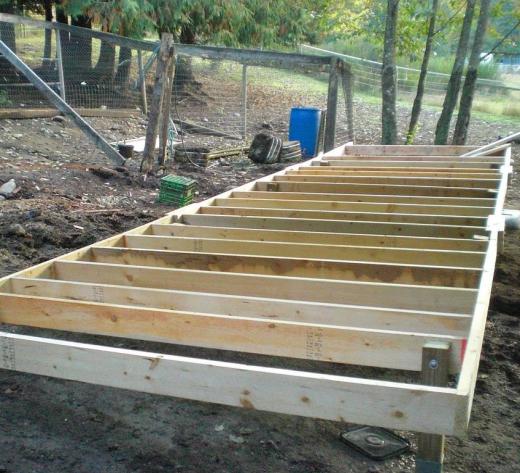A floor beam is a large beam, typically steel, that spans the width of a house at the center and gives support to the floor joists. The floor beam is commonly used in houses that have a basement. The beam is usually supported along its length with adjustable jacks that rest on cement footings and are adjusted upward to secure the floor beam and prevent it from sagging. With the advent of the manufactured particle board beam, some builders choose to forgo the steel beam for the manufactured wood product. One advantage in using the steel beam is that it is less prone to twisting and bowing than a similarly-sized wooden beam.
The open space of a basement forces the builder to take steps to prevent the sagging of a floor as the joists span the opening with no support. With all of the materials used by builders to prevent this from happening, nothing is as successful in supporting a floor as a floor beam. Commonly fashioned from a steel "I" beam, the floor beam rests in notches built into the house's foundation on each end. The length of the beam will dictate how many floor jacks will be required to give support across the length of the beam.

The floor beam itself is commonly hidden by the ceiling tiles of a finished basement, while the jacks are usually boxed in and blended into the surrounding area by use of paint, paneling or wallpaper. In an unfinished basement, the beam and jacks are typically left exposed. When using a steel floor beam, some builders apply a bead of epoxy or strong glue under the floor joists to prevent them from sliding on the steel surface. On a wooden beam, the joists are commonly nailed to the beam to prevent squeaks and slippage.

It is common for a builder to use a floor beam only on the first floor of a building and rely on interior walls and other inside features to give support to any subsequent upper floors. Some building designs, especially those that incorporate large open space or a loft-style upper story, may often use a large wooden floor beam to give architectural strength as well as visual appeal to the structure. Buildings such as log homes are often designed with large wood beams spanning the width of the upper stories, including the roof, to give needed support without sacrificing the traditional visual appeal.
